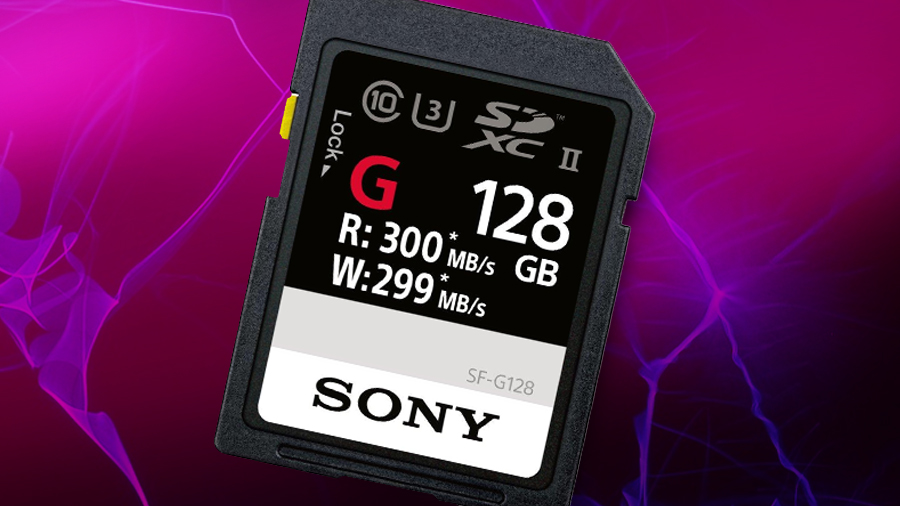Music
Trailers
DailyVideos
India
Pakistan
Afghanistan
Bangladesh
Srilanka
Nepal
Thailand
StockMarket
Business
Technology
Startup
Trending Videos
Coupons
Football
Search
Download App in Playstore
Download App
Best Collections
Technology
I was wrong. Several years ago I reviewed the first Garmin Fenix 3 smartwatch. This was before the release of the Apple Watch. Thatkey to this story. I declared Garmin would have a hard time selling the Fenix 3. The Apple Watch would be better in every way, I pointed out. Therefore, there would be little reason to buy the Fenix 3.
But here I am, in the middle of the woods, wearing the fifth generation of the Garmin Fenix while my Apple Watch sits at home on my desk.
In some ways I was right. The Apple Watch is better by most measurable attributes: there are more apps, the screen is superior, therea vibrant accessory market, and itthinner, faster and cheaper.
The Garmin Fenix is big, clunky and the screen looks like itfrom a Kindle. Itnot a touchscreen nor does it have the number of apps or band options of the Apple Watch. I like it. To me, the Garmin Fenix is akin to a modern Casio G-Shock, and thatwhat I want to wear right now.
Smartwatches are often reviewed like phones or vacuums. Specs are compared, and conclusions are drawn. Wearability is talked about, and functions are tested. If the watch has a swimming option, take it in a pool never mind the fact the reviewer hasn&t done a lap since high school.
I started out doing the same thing with this Garmin. I took it kayaking. I had kayaked twice in my life, and dear reader, I&m here to report the watch performed well on this kayak trip. The watch has topography maps that novel though not useful since the river. It has a cadence beat to help keep strokes consistent. I tried it all. I ended up drinking a lot of Michigan beer instead of tracking the performance of the watch. Sorry.
Still, performance matters to a point.
Heremy OG review of the Garmin Fenix 5: The watch is significant even on my wrist. The screen is underwhelming though italways on and visibility improves in sunlight. The buttons have great tactical feedback. The watch is waterproof to the extent it survived a flipped kayak and hours in Lake Michigan. The battery lasts nearly a week. The watch does not know when iton or off the wrist, so notifications will cause it to buzz while iton your nightstand.
But most of that doesn&t matter. The Garmin Fenix 5 is exceptional, and I love wearing it.
Smartwatches need to be reviewed like ordinary watches. I need to explain more about how the watch feels rather than what it does or how it works. At this point, several years into smartwatches, itnot notable if the smartwatch with a smartwatch. Of course, it tracks steps and heart rate and displays select notifications from my phone. If those items work then, they&re not important in a review.
Take a Citizen Skyhawk line. It packs a highly sophisticated complication thatdesigned, so the maker says, for pilots. Ball makes a lovely line intended to provide accurate timekeeping for train conductors. There are watches for high magnetic fields, tactical operators, racer car drivers and, of course, countless for divers. Heremy point: The vast majority of these watches are not used by divers or train conductors or fighter pilots.
This Garmin Fenix watch, much like the Apple Watch or Rolex diver, can be an aspirational item. Itlike the juicer in my kitchen or rowing machine in my basement. I got it because I wanted to be a person who woke up and juiced some veggies before my workout. I haven&t used either in months.
Smartwatches are different from smartphones and need to be reviewed as such. This Garmin Fenix watch has many modes I would never use, yet I love the watch. Therea base jumping mode. I&m not jumping off a cliff. Therea tactical mode and a golf mode and an open water mode, and I have no desire to be in situations where I need to track such activities. But I like the thought of having them available if I ever wanted to monitor my heartbeat while shooting targets.
The smartwatch industry is approaching a point where features are secondary to design. Itexpected that the watch will track steps and heartbeat while providing access to various features. Itlike the time and date of a regular watch. Past that, the watch needs to fit in a personaspirations.
Everyone is different, but to me, this is how it is laid out: The Apple Watch is for those looking for the top-tier experience regardless of the downsides of constant charging and delicate exterior. Android Watches are those looking for something similar but in a counter-culture way. The Samsungsmartwatch is interesting and with the new Galaxy Watch, finally reaching maturity.
There are fashion smartwatches with fewer features but designs that make a statement. Thatwhere this Garmin watch lives and I&m okay with it. Fossil and Timex watches live here too. Using the Apple Watch as a standard, some of these fashion watches cost more, and some cost less, but they all say something an Apple Watch does not.
I&m bored with the Apple Watch, and right now I&m into thinking I live the type of life that needs a smartwatch that tracks every aspect of a triathlon. I don&t need all these features, but I like to think I do. I also don&t need to have a GMT watch with a third timezone, and I don&t need a watch with a hacking movement hand as if I need to synchronize my watch with other members of my special forces squad. But I have those watches along with dive watches and anti-magnetic watches. I&m not alone. The watch industry has long existed on selling lifestyles.
I was wrong before. The Apple Watch isn&t better than this Garmin or most other smartwatches— at least itnot better for me right now. Maybe two weeks from now I&ll want to wear an Apple Watch and not because itbetter, but because it makes a different statement.
- Details
- Category: Technology
Read more: Understanding smartwatches
Write comment (94 Comments)Despite regulatory hurdles on a city-by-city basis, electric scooter companies and their respective services are continuing to make their way to markets all over the world. Earlier this week, for example, Lime announced its entrance into Madrid, launching hundreds of electric scooters in the Spanish capital. About a week before that, competitor Bird launched in Paris and laid out its intentioned to bring electric scooters to Tel Aviv.
As Bird expands to international markets, itworth noting that competitor Lime has operated its bikes and scooters outside of the U.S. for quite some time.Last December, Lime brought its bikes to a number of European cities and in June,Lime brought its scooters to Paris. Lime alsorecently raised a $335 million round and teamed up with transportation behemoth Uber.
Nationwide, Bird, Lime, Spin, Goat and Skip have collectively deployed scooters in 33 cities. Outside of the U.S., you&ll find scooters from those companies in just three cities.
Bird and Lime are by no means the only companies working in this space, but they&re the two that have raised most the capital. Bird has raised $415 million in funding while Lime has raised $467 million. Bird and Lime are also the only two U.S.-based scooter companies that have gone international.
Over in the U.S., of course, the competitive landscape is an entirely different story.California is the main hot spot for scooters in the U.S., but they have also popped up in Texas, Washington D.C., North Carolina and other states throughout the country.
Unsurprisingly, regulation has proved to be an issue for many of these companies. In San Francisco, the Municipal Transportation Agency is currently reviewing permit applications from 12 electric scooter services — including ones from Lyft, Uber and Razor — looking to operate in the city. The permit process came as a result of Bird, Lime and Spin deploying their electric scooters without permission in the city in March. Fast forward to today and electric scooters are nowhere to be found on the streets of San Francisco.
The SFMTA initially said it expected to make a decision about which five, if any, companies would receive permits by the end of June. The SFMTA expects to finalize its recommendations and documentation &in the coming weeks,&the SFMTA wrote in a blog post last month. Once thatdone, the agency says it will work with companies to finalize and clarify the terms and conditions of the permit. The goal, according to the blog post, is to issue permits sometime in August.
As part of the 24-month pilot program, electric scooter companies selected to operate in the city will need to provide user education and insurance, share its detailed trip data with the city, have a privacy policy that protects user data, offer a low-income plan and operate in a to-be-approved service area. The city will allow no more than 2,500 electric scooters on the streets at any one time.
Last month, Bird tried to launch its scooters in Boston but regulators quickly cracked down, saying it would impound any scooters it found. And letnot forget the drama that unfolded in Santa Monica, where Bird first deployed its scooters.
In Austin, D.C. and Portland, Ore., ita slightly different scenario.Over in Austin, dockless electric scooter startupGOAT says itworkingwith the city to ensure its service meets the criteria laid out by regulators. Moving forward, GOAT says itactively working with other cities to pursue additional operating permits. Skip, whichis trying to differentiate itself by being more heavy-duty,worked with city officials and lawmakers to ensure it had the green light before launching. In Portland, both Skip and Bird have received permits to operate electric scooters in the city.
With the sheer volume of capital pouring into these companies, along with interest from ride-hailing giants Lyft and Uber, itclear these scooters are here to stay. Whether cities like them or not, scooters are going to roll up. Itjust a matter of when and how many.
- Details
- Category: Technology
Read more: Electric scooters are going worldwide
Write comment (99 Comments)

Android apps that make careless use of external storage (such as SD cards) could leave your phone vulnerable to hackers.
Your phone's internal storage is carefully managed – each app uses it separately, and it's protected by the Android sandbox. External storage, like SD cards, is different. It allows data to be shared between apps and doesn't have
- Details
- Category: Technology
Read more: Apps that make sloppy use of SD cards leave your phone vulnerable to hackers
Write comment (93 Comments)
You've got an iPhone, and have ventured into the melee of Apple's App Store, which has well over a million apps.
Great news! Many of them are free. Not so great news! You've got to sift through them to work out the very best. Fortunately, that's what we're here for, listing them here.
Our selection’s sorted into handy categories, so whether you need
- Details
- Category: Technology
Read more: The best free iPhone apps of 2018
Write comment (97 Comments)
When it comes to graphics hardware, laptops are somewhat different to the traditional desktop PC. There are core similarities, and just like desktops, notebooks can run with either integrated graphics – that means a GPU (Graphics Processing Unit) built into the processor – or discrete graphics, which denotes that the graphics card is a separate
- Details
- Category: Technology
Read more: Laptop graphics cards explained
Write comment (99 Comments)
If you're shopping for a new laptop for school or college, cost will probably be at the forefront of your mind, but great value doesn't mean tolerating poor performance or shabby stylings.
Manufacturers are coming to realize that everyone values a well-designed device, and there's now a great selection of laptops that are powerful enough for any
- Details
- Category: Technology
Read more: Studying in style: the best-looking laptops for school and college
Write comment (98 Comments)Page 4475 of 5614

 19
19





